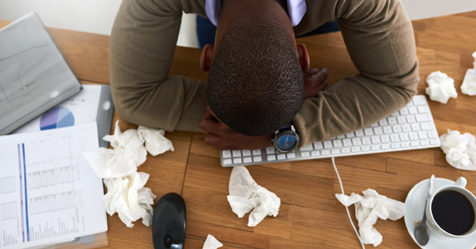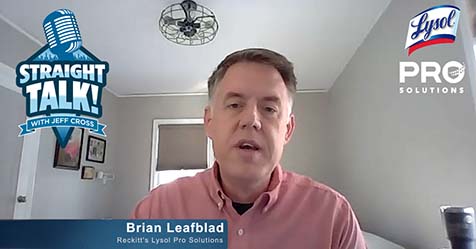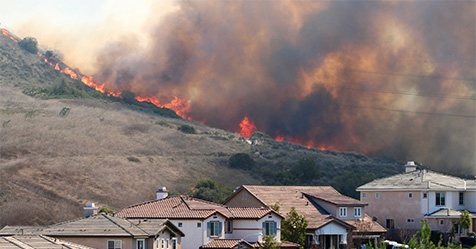In the past year, cleaning professionals have adopted more stringent protocols and procedures to help slow the spread of viruses. With that, many facility managers and other cleaning professionals may have increased using high-powered disinfectants indiscriminately across surfaces in an attempt to eradicate pathogens.
While using effective chemicals is necessary for reducing the spread of disease, some powerful chemicals release volatile organic compounds (VOCs) into the air that can impact indoor air quality. Instead, research shows facilities can use a targeted hygiene approach that addresses the surfaces most likely involved in transmission without overusing chemicals. Facility managers can follow disinfection best practices while fully understanding the key features and benefits of products, and how to use them correctly.
Five questions to consider for disinfecting programs
Facility cleaning professionals can consider the following questions to determine what cleaning and disinfection procedures will help reduce the spread of pathogens:
Who?
First, make note of who is the most at risk in the facility. Older adults and other immunocompromised individuals have a higher risk of severe illness from COVID-19 and other pathogens like influenza, according to the U.S. Centers for Disease Control and Prevention (CDC). Facilities that host higher numbers of at-risk groups, such as long-term care facilities, will require heightened disinfection protocols than those serving low-risk populations.
What?
Next, decide what products to use. When choosing products, pay attention to the difference between cleaning, sanitizing, and disinfecting. Cleaning physically removes soils from surfaces, while sanitizing lowers the number of germs to a safe level, and disinfecting kills bacteria and viruses on surfaces. Many products can perform all three tasks. Check that products are listed on the United States Environmental Protection Agency (EPA) website and are proven to inactivate pathogens of concern, including SARS-CoV-2, the virus that causes COVID-19. Additionally, be sure to use the appropriate cleaning product on the right surface. For example, a bleach-based product may be correct for cleaning a toilet bowl but could damage an electronic device.
Where?
Cleaning professionals can then determine where to disinfect within the facility. High-touch points, or surfaces that everyone in the facility touches, include tabletops, counters, light switches, elevator buttons, door handles, remote controls, water fountains, and more. Other high-risk surfaces such as toilet handles and faucets in restrooms, or those that are in contact with raw food in foodservice areas should also be a priority. In general, elevated surfaces, including counters and handrails, are likely to receive a lot of hand contact, whereas surfaces like floors may not need disinfection at all. However, these considerations will change from facility to facility. For example, floors in childcare facilities may become high-touch points when children play on the floor.
While sanitizing an elevator button after every touch is not feasible, facilities can encourage building staff and occupants to frequently wash and sanitize hands and thereby reduce the risk of transmission via hands and high-touch surfaces. The CDC recommends handwashing as one of the best ways to prevent the spread of germs. When soap and water is not readily available, be sure to choose a sanitizer with at least 60% alcohol content. Facilities can make restroom hand soap available and provide hand sanitizing stations at building entrances to proactively reduce pathogen spread.
When?
While custodial staff typically disinfect at the end of the day, pathogens are traveling between people and indoor spaces all day long. Cleaning staff can not only disinfect more often but can also identify times that call for more disinfection or that trigger more handwashing. Every schedule is unique to the facility’s needs. Childcare facilities will likely need more frequent disinfection, and a cafeteria may need disinfection in between popular mealtimes. Using a targeted hygiene approach can help employees identify the most important times for cleaning and disinfecting without having to wait for cleaning crews. For example, elevators and entrance doors may need attention after the “morning rush” of employees entering the building while restrooms may need cleaning after key break times or during lunch. Facility managers should provide effective products that address disinfection during these high-risk moments for infection transmission.
How?
The last step is to train cleaning professionals on how to clean according to best practices and CDC guidelines. Facilities can provide staff with the right personal protective equipment (PPE) such as gloves and make sure all necessary training or educational materials distributed throughout the facility are available in key languages. Additionally, safety data sheets that come with cleaning and disinfecting products should be accessible for all cleaning staff to review before using new products.
When cleaning and disinfecting a surface, start by cleaning off any heavy soil before applying disinfectant to achieve the best results. Then, follow the manufacturer’s instructions regarding contact time. Cleaning and disinfecting products come with a recommended amount of time to leave the chemical wet on the surface before wiping. Following these contact times ensures the chemical reaches its full efficacy against pathogens. After leaving the surface wet with the disinfectant for the contact time, wipe with disposable or microfiber cleaning cloths. Cleaning professionals should also be sure not to carry soil from one surface to another by repeatedly using the same cloth for all surfaces.
Targeted hygiene for facility safety
By identifying the most important areas to disinfect and following disinfection best practices, facilities can help reduce the risk of pathogen spread. Additionally, facilities can encourage regular handwashing and hand sanitizing to eliminate germs before they reach high-touch points in the facility. Follow these five questions to develop a cleaning and disinfection program that addresses the most high-risk areas without overuse of chemicals.




